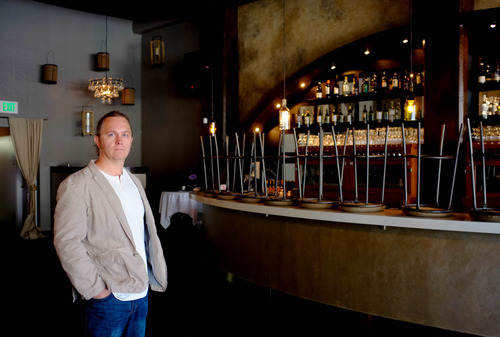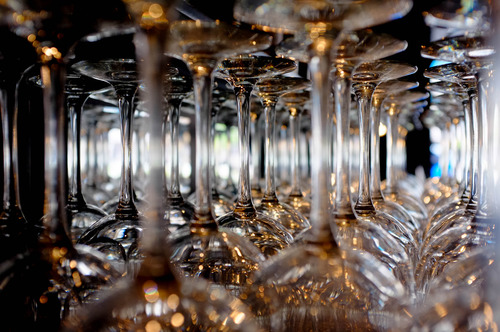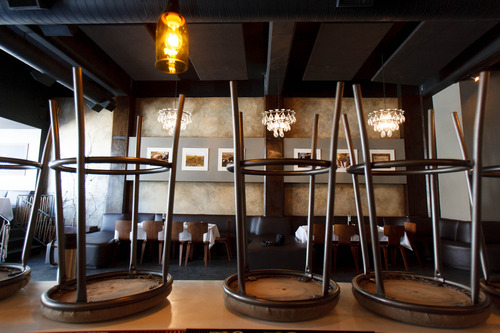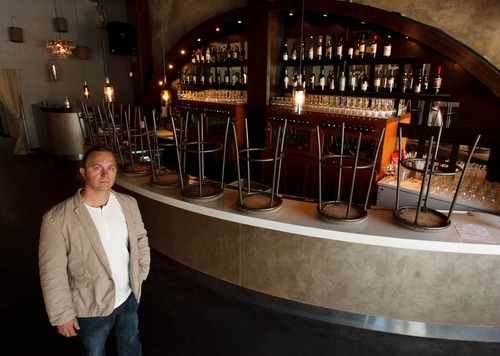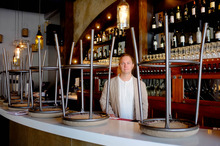This is an archived article that was published on sltrib.com in 2013, and information in the article may be outdated. It is provided only for personal research purposes and may not be reprinted.
Owners of Utah restaurants, hotels and resorts are pleading with lawmakers to reconsider a decision in 2010 to ignore their own auditor's recommendation that they create more club liquor licenses, inaction that has resulted in an acute shortage.
The businesses' case is that they are dying economically.
In the name of economic development, the Legislature did take the auditor's advice to free up more restaurant liquor permits to jump-start stalled projects. But for years they've frozen the number of club licenses, creating a backlog as high as 20 applicants and forcing bars to compete with fine-dining eateries when licenses become available. The number fluctuates as business fail or they give up on getting a club permit.
The number of available club permits is based solely on population quotas — not on demand from existing imbibers and not to meet the expectations of the 20 million tourists who visit and dine in Utah each year. Business owners have long asked that lawmakers consider that important piece of the state's economy when making decisions on permits.
But legislative leaders generally have been unwilling to remedy the situation, citing concerns about drunk driving, underage drinking and overconsumption. More than 80 percent of legislators are members of The Church of Jesus Christ of Latter-day Saints, which teaches its members to refrain from drinking alcohol.
The inaction has created a bottleneck of applicants for the coveted licenses. Three years ago, the waiting period was eight months to get one, compared with two years today, which puts business owners' livelihoods on the line.
For some, desperate times have led to desperate measures. Fred Moesinger, owner of the Cafe Molise in Salt Lake City, has turned to the court of public opinion to help him open a wine bar. He's gathered more than 350 signatures asking the liquor commission to award him the single club license that is expected to become available in June. He's one of 16 applicants in Salt Lake, Summit, Grand, Weber and Duchesne counties.
Last year, Moesinger completed renovations on a building at 63 W. 100 South in hopes of opening the BTG Wine Bar, with food service provided by the nearby Cafe Molise. While he waits for a club permit, he's been hosting private parties and opening overflow seating from the cafe when big conventions are in town. But it's not economically feasible to continue leasing space without knowing when — if ever — he can get a liquor permit.
"We had high hopes the Legislature would create more club permits," said Moesinger, who notes that BTG stands for By the Glass. "We're still hoping they'll listen."
Owners of the Hyatt Escala Lodge in Part City have been waiting for a club license since August 2012 so they can swap it for an existing restaurant license, the only permit available when the hotel opened in 2010. Many business owners see downsides to restaurant permits, which require diners to order food in order to be served alcohol instead of being able to drink freely. New establishments must also pay to build a partition dubbed a Zion curtain to hide bartenders from public view, a restriction the Legislature recently instituted under the theory that restaurants should not be bars, and vice versa..
Most guests at the lodge are out-of-staters who "frequently comment about how unusual it is that they can't enjoy a cocktail or a glass of wined served in a traditional bar setting, without the server having to retreat to an area out of sight to make or pour a drink,and without the necessity of having to order a meal in conjunction with their beverage," Hyatt representative Karen Kendrick told liquor commissioners in January.
The Hyatt Escala, at The Canyons Ski Resort, is a condominium hotel with 175 rooms and a AAA Four Diamond Award rating, representing the upper echelon of hospitality and fine dining.
Rep. Ryan Wilcox, R-Ogden, who sponsored a failed bill to do away with Zion curtains, said the scarcity of club licenses "is another example of our liquor system struggling to meet supply and demand. We're always trying to find the right balance, but there are so many competing interests, I'm not sure if we'll ever get [it] right."
David Gladwell, chairman of the Utah Alcoholic Beverage Control Commission, said permit ratios are up to the Legislature to decide, and the liquor board doesn't get involved in legislation.
"Rather, we see our role in implementing statutes passed by the Legislature," he said. "If club licenses become available, we distribute them as soon as we can. We wish there were additional licenses because there are applicants who are ready and willing to provide a good service to the community. But, our hands are tied."
twitter@DawnHouseTrib —
What's a restaurant in Utah?
Bars are competing with fine dining eateries for club licenses, which are in short supply. Here's the distinction:
Social clubs • Establishments such as Liquid Joe's in Salt Lake City are public bars. No minors are allowed and no food orders are required to imbibe.
Dining clubs • Some upscale eateries, such as Ruth's Chris Steak House, are not classified as a restaurant. Minors must be accompanied by an adult, and drinks are allowed with or without meals. Overall food-to-alcohol receipts must be 60/40, respectively.
Restaurant permits • Other eateries, such as Market Street Grill, fall into this category. Food-to-alcohol receipts must be 70/30, respectively. Diners are allowed to order alcohol-based drinks only when food is served, and establishments open since January 2010 must keep bartenders hidden from public view.
Source: Utah Department of Alcoholic Beverage Control —
Club license bottleneck
Lawmakers recently have not created any new club or bar permits, whose numbers are based on the state's population. Here's the history:
2011
June through December • No permits available, 18 applicants
2012
January through July • No permits, 18 applicants
August • Two permits, 21 applicants
September • One permit, 17 applicants
October • No permits, 17 applicants
November • One permit, 14 applicants
December •One permit, 15 applicants
2013
January • One permit, 13 applicants
February • One permit, 12 applicants
March • One permit, 12 applicants
April • One permit, 11 applicants
May • One permit expected


